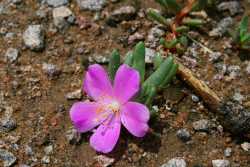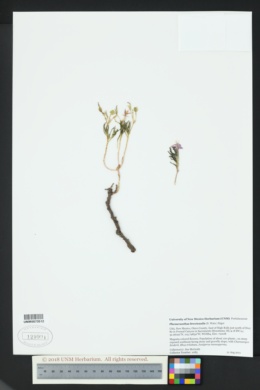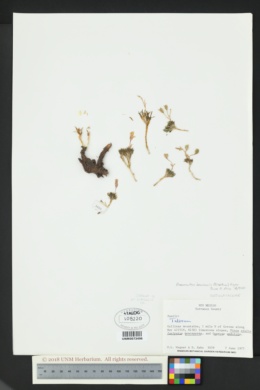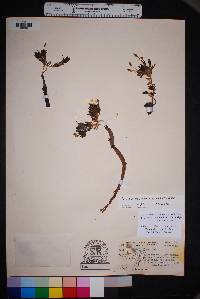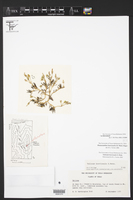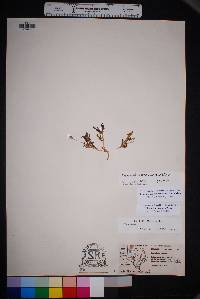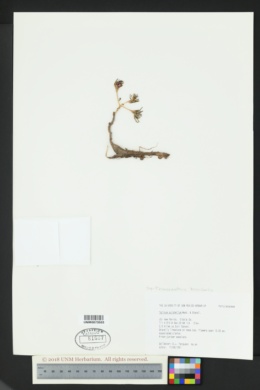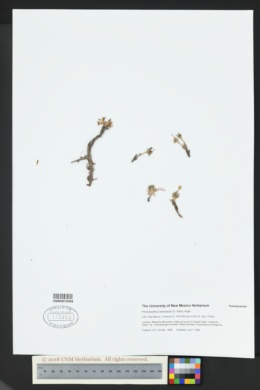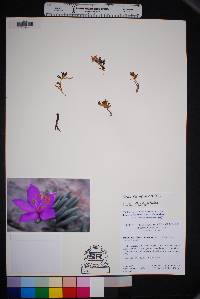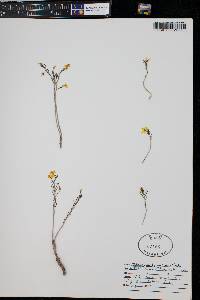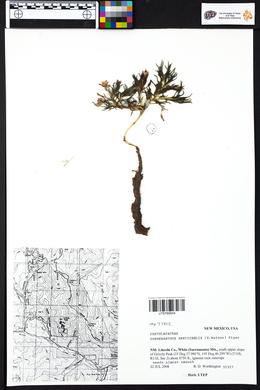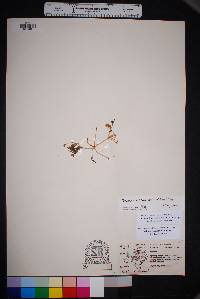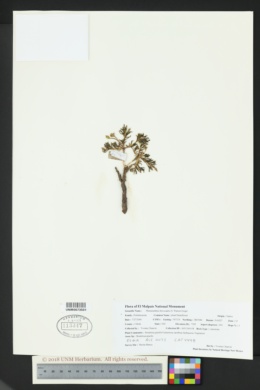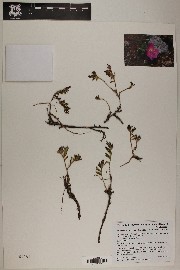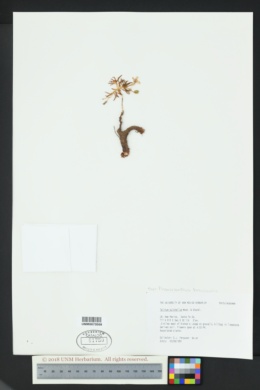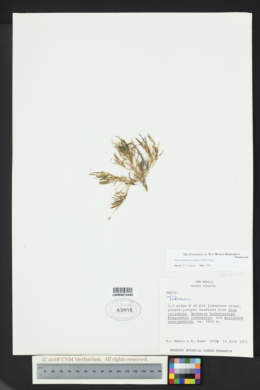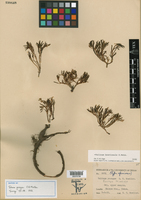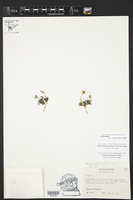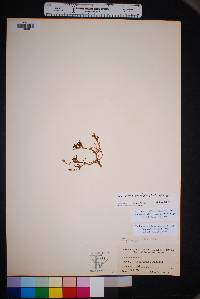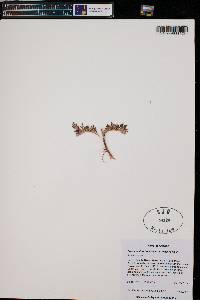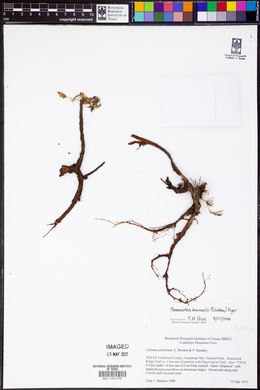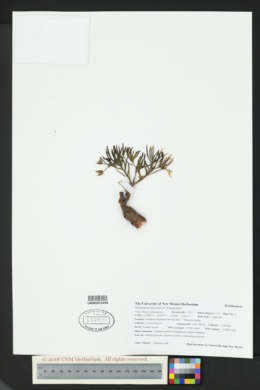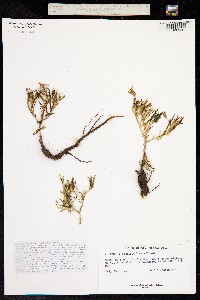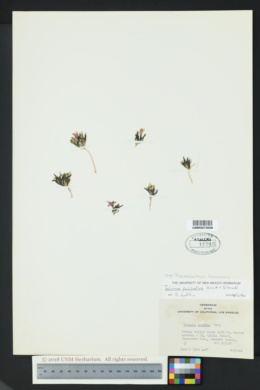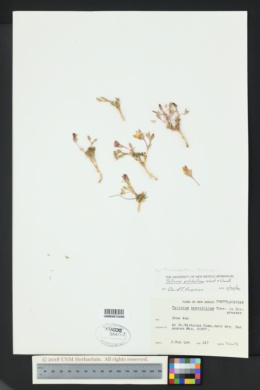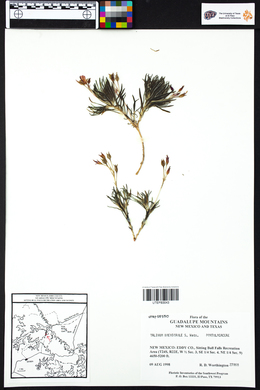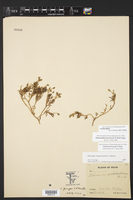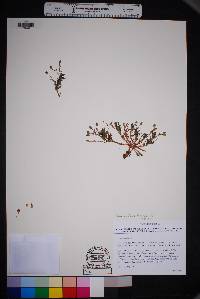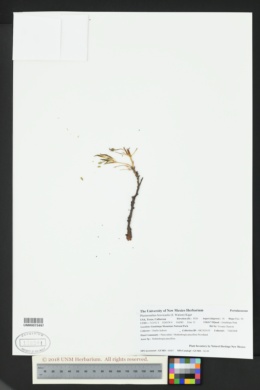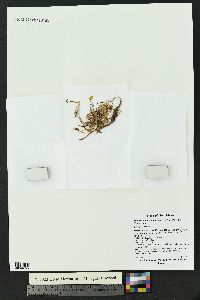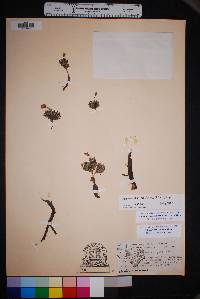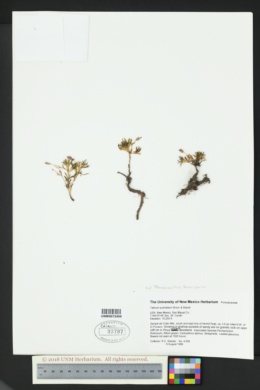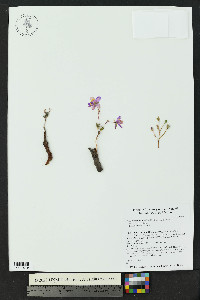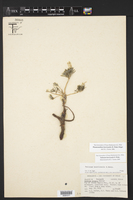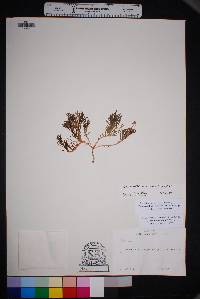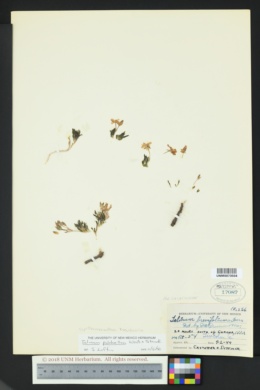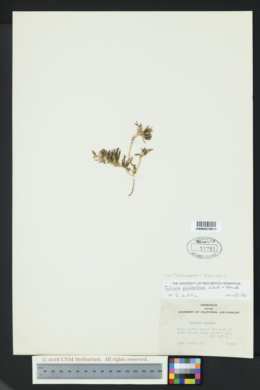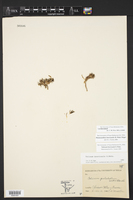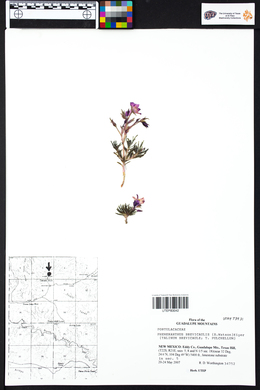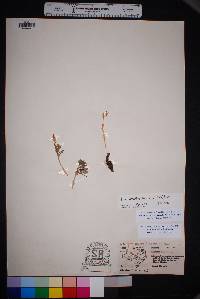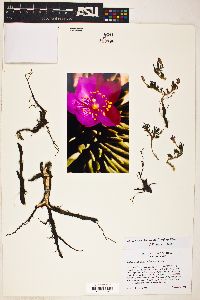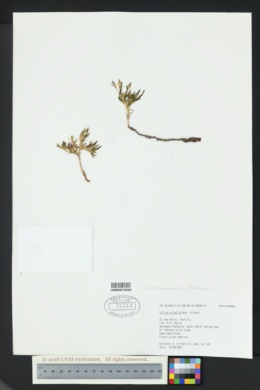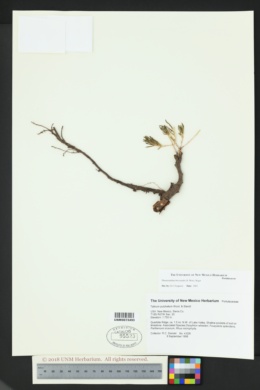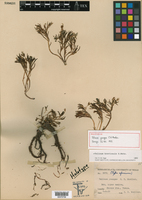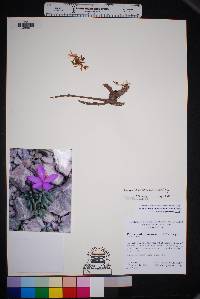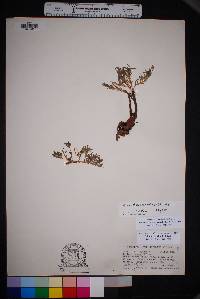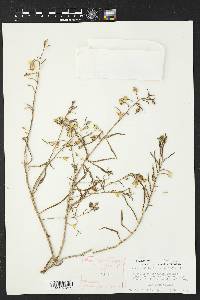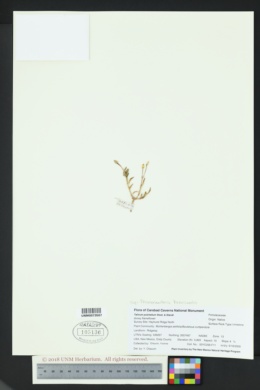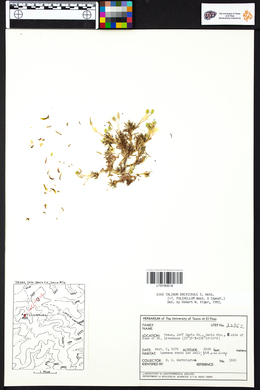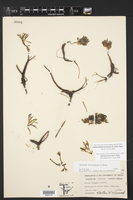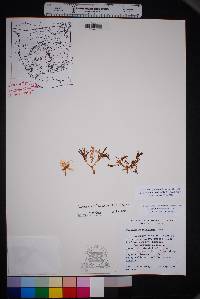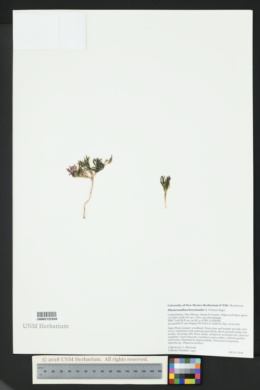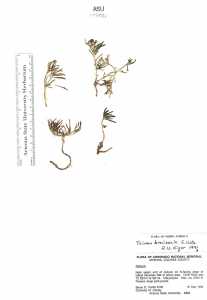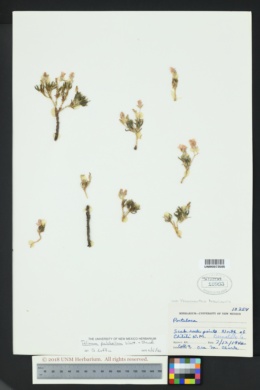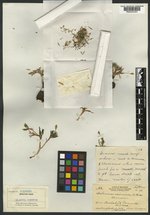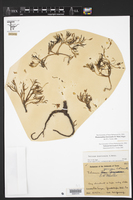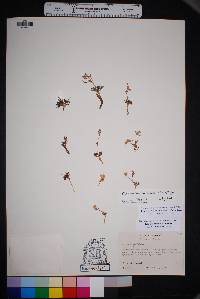Phemeranthus brevicaulis
|
|
|
|
Family: Montiaceae
Dwarf False Fameflower
[Talinum brevicaule S.Watson, moreTalinum eximium , Talinum pulchellum Wooton & Standl., Talinum youngiae] |
Plants to 1 dm; roots fusiform, fleshily woody. Stems spreading-ascending, branching, sometimes suffrutescent. Leaves sessile; blade to 2.5 cm, distal terete or subterete, proximal flatter, broader, somewhat shorter. Inflorescences cymulose or 1-flowered, slightly to distinctly overtopping leaves; peduncle not scapelike, to 1.5 cm. Flowers: sepals persistent, ovate to elliptic-lanceolate, to 8 mm; petals light rose to purplish red, obovate, to 16 mm; stamens usually 20; stigma 1, subcapitate. Capsules ellipsoid, 4-6 mm. Seeds without arcuate ridges, 1 mm. 2n = 24. Flowering Apr-Sep. Dry woodlands on rocky slopes, ridges, and crests, in limestone and igneous soils; 1600-3000 m; Ariz., N.Mex., Tex.; n Mexico (Chihuahua, Coahuila). Within the flora area Phemeranthus brevicaulis has been known most generally as Talinum pulchellum, which was based on a collection from Queen, New Mexico. However, P. brevicaule, which was described earlier (as T. brevicaule) from the Santa Eulalia Mountains in Chihuahua, Mexico, differs in no significant respect, and that epithet has priority when the two entities are merged.
PLANT: Herbs to ca. 6 cm tall. ROOTS: fusiform, somewhat woody. STEMS: branching, spreading-ascending, sometimes suffrutescent. LEAVES: sessile, to 25 mm long, the upper terete or subterete, the lower flatter, wider, somewhat shorter. INFLORESCENCE: terminal cymes or cymules, sometimes from very short sub-branches and appearing lateral, sometimes only 1-flowered, slightly to distinctly overtopping the leaves; peduncles to ca. 15 mm long. FLOWERS: sepals ovate to elliptic-lanceolate, 5-8 mm long, persistent beyond capsule dehiscence, equaling or exceeding mature capsules; petals obovate, 9-16 mm long, light rose to purplish-red; stamens usually 20 or more; stigma 1, subcapitate. CAPSULES: ellipsoid, 4-6 mm long. SEEDS: smooth, ca. 1 mm long. SYNONYMS: [Talinum brevicaule S. Wats.; T. pulchellum Wooton & Standl.]. NOTES: Dry woodlands on rocky canyon slopes: mts of sw Cochise Co.; ca. 1900 m (ca. 6200 ft); May-Sep; NM, w TX; Chih., Coah., Mex. REFERENCES: Allison Bair, Marissa Howe, Daniela Roth, Robin Taylor, Tina Ayers, and Robert W. Kiger., 2006, Vascular Plants of Arizona: Portulacaceae. CANOTIA 2(1): 1-22. CANOTIA 2006, FNA 2004 Duration: Perennial Nativity: Native Lifeform: Forb/Herb General: Herbaceous perennials, to 10 cm tall, stems branching, spreading to ascending, sometimes suffrutescent, roots fusiform, fleshily woody. Leaves: Alternate or subopposite, sessile, rigid and fleshy, to 2.5 cm, distal terete or subterete, proximal flatter, wider, somewhat shorter. Flowers: Large, pink, and showy, petals light rose to purplish red, obovate, 9-16 mm long, sepals ovate to elliptic-lanceolate, 5-8 mm long, persistent, equaling or exceeding mature capsules, stamens usually 20 or more, stigma solitary, subcapitate, inflorescences borne in terminal cymes or cymules, sometimes from very short sub-branches and appearing lateral, sometimes only 1-flowered, slightly to distinctly overtopping the leaves, peduncles to 15 mm long. Fruits: Capsules ellipsoid, 4-6 mm long, longitudinally dehiscent, 3-valved, the valves deciduous. Seeds smooth, to 1 mm, brown to black, many. Ecology: Found on limestone and igneous soils in dry woodlands, rocky canyons, rocky slopes, ridges, and crests, from 5,500-10,000 ft (1676-3048 m); flowering April-September. Distribution: Arizona, New Mexico, Texas; Mexico. Notes: The large and showy pink flowers are often much larger than the fleshy stems and leaves, and stand out in areas of low vegetation. Ethnobotany: There is no use recorded for this species, but other species in the genus Talinum (a synonym) have uses. Etymology: The meaning of Phemeranthus is unknown, while brevicalus means short-stemmed. Synonyms: Talinum brevicaule, Talinum eximium, Talinum pulchellum, Talinum youngiae Editor: LCrumbacher 2012 |


